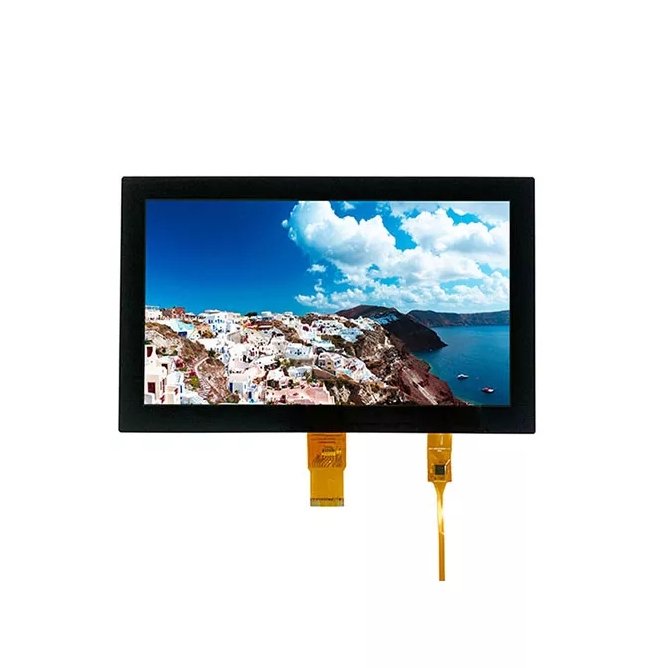Views: 234 Author: Reshine Display Publish Time: 2023-10-10 Origin: Site









It is critical to keep your LCD TV screen clean for it to appear its best and work effectively. A filthy screen can degrade image quality and make it difficult to see what is displayed. Cleaning an LCD TV screen, on the other hand, necessitates some caution to avoid damaging it.
There are a few things you should consider before beginning to clean your LCD TV screen:
Turn off the TV and unplug it from the power outlet before cleaning the screen. This will protect the TV from electrical damage and keep you safe when cleaning.
To clean the screen, use a gentle, lint-free microfiber cloth. Paper towels and other abrasive items should not be used since they can scratch the screen.
Dampen the cloth lightly with water or a screen cleaning solution made exclusively for LCD panels. Spraying water or cleaning solution straight onto the screen is not recommended.
To clean the screen, avoid using strong chemicals or rough materials. They can harm the screen, causing discoloration or other problems.
Now that you know things to remember before cleaning, let's go over how to clean an LCD TV screen:
Before you begin cleaning, gently brush away any dust or dirt on the screen using a gentle, dry microfiber cloth. Applying too much pressure or rubbing the screen too hard is not recommended. This can result in screen scratches or damage.
Dampen the microfiber cloth lightly with water or a screen cleaning solution made exclusively for LCD panels. Using too much water or cleaning solution can damage the screen.
Wipe the screen gently in a circular motion, beginning at the top and working your way down. Applying too much pressure may result in screen damage. Wiping in a back-and-forth motion might cause streaks on the screen.
To completely dry the screen, use a dry microfiber towel. Check the screen for any remaining streaks or water stains. Again, avoid applying excessive pressure or rubbing the screen too vigorously.
If the screen remains dirty, repeat the cleaning procedure until it is spotless. Cleaning the screen too frequently, on the other hand, can damage it. Only clean the screen when necessary.
There are numerous screen cleaning products created exclusively for LCD panels on the market. These solutions are frequently alcohol-free and therefore suitable for use on LCD screens. However, before using any cleaning solution on your LCD TV screen, read the box and carefully follow the directions. Here is TFT LCD Display.
Among the most frequent screen cleaning solutions are:
In a spray bottle, combine equal parts of isopropyl alcohol and distilled water. Spritz the solution onto the microfiber cloth rather than the screen. Wipe the screen carefully with a damp cloth before wiping it dry with a dry microfiber cloth.
In a spray bottle, combine equal parts white vinegar and distilled water. Spritz the solution onto the microfiber cloth rather than the screen. Wipe the screen carefully with a damp cloth before wiping it dry with a dry microfiber cloth.
There are numerous commercial screen cleaning products created exclusively for LCD screens on the market. Before applying any commercial solution to your LCD TV screen, carefully read the label instructions.
Cleaning an LCD TV screen takes some time and effort. It is critical to use a soft, lint-free microfiber cloth to clean the screen and to avoid using harsh chemicals or rough objects that can damage it. You can maintain your LCD TV screen clean and looking its best by following the procedures given in this article and using a screen cleaning solution specifically developed for LCD panels.
Contact us if you want to learn more about TV LCD screen technology.
The LCD Display back-end detection method involves testing the electrical and functional properties of the manufactured LCD module.
This procedure is critical to ensuring that the LCD performs properly and satisfies the relevant standards. The following steps are commonly included in the back-end detection process:
The electrical qualities of the LCD module are checked by measuring parameters such as voltage, current, resistance, and capacitance with specialized equipment. This testing ensures that the LCD module is operating within the electrical parameters required.
The LCD module is visually inspected during this process to look for any physical faults that could compromise the display quality. Scratches, cracks, and other flaws can degrade display quality and must be found and corrected before the module is integrated into the final product.
This phase entails inspecting the display for any faults such as dead pixels, color accuracy, and brightness. To ensure that the display performs successfully and satisfies the needed specifications, specialized equipment is utilized to replicate real-world usage circumstances, such as showing different colors and images.
It assures that the LCD module can survive extreme temperatures, humidity, and vibration. Environmental testing is critical since LCD modules are frequently utilized in severe locations and must perform properly under these conditions.
Overall, the back-end detection procedure is critical to ensuring that the LCD module works properly and satisfies the needed standards. Each step of the process is meticulously designed to discover and address any potential faults with the module before it is integrated into the final product. Manufacturers can ensure that the LCDs they create are of excellent quality and satisfy the expectations of their consumers by following the back-end detection process.
Boosting Urban Mobility: Making Public Transport the Go-To Choice in Your City
How Do You Troubleshoot Common Issues with MIPI LCD Displays?
What Are the Key Technical Specifications to Consider When Selecting a MIPI LCD Display?
What Are the Pros and Cons of Using LCD Displays for Gaming?
What Are the Environmental Impacts of Manufacturing LCD Displays?
How Does the Viewing Angle Affect the Quality of LCD Displays?